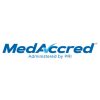The Medical Device Regulation (EU) 2017/745 became the applicable EU law on May 26, 2021. After a four-year transition period, is anyone ready? Well, let us have a look. There are currently only 22 of the 53 notified bodies under the prior Medical Device Directive (MDD) that have achieved their designation. And many of them are operating with limited scopes and limited resources. What does this really mean? Well, in short, there are not enough resources to handle all of the new applications coming. We recommend speaking with your consultant and/ or notified body today to verify if your regulatory strategy is still sound. As of today, DNV is accepting MDR applications but the timelines have already jumped from 4 weeks to more than 8 weeks to start a project for some medical device categories. But some notified bodies are not even accepting applications for certain medical device categories or generic device groups.
So, if we look at this as a simple math problem, we are faced with fewer than half of the once available notified bodies to choose from and then add into this equation: fewer resources, less scope or qualification of those resources, as well as costly training and qualification of new resources. So now, where are we headed? The lead times will, eventually, start approaching 6 months or more. Companies, who do not already have a relationship with a notified body, may face lead times of up to a year before many notified bodies accept new customers. This is not meant to scare, but only to encourage medical device manufacturers to start planning now.
Completing your certification and getting on the EU market in under 5 months is no longer a realistic goal. Some notified bodies have already started communicating to their clients to begin the certification process 18 months before their MDD certificate expires.
The alarm has been sounding for years from the notified bodies, as well as consultants. According to Dr. Bassil Akra, the CEO from AKRA TEAM GmbH, “This is not a surprise that we didn´t expect. When I was working for notified bodies and representing them in the various working groups in the EU, we raised the flag and shared our view about the expected problems associated with the limited number of notified bodies and capacities. We are just now getting confirmations, and the biggest hurdle is that we are not able to predict the times of certification due to the learning curve of the various stakeholders and the moving target of expectations.”
The EU market was once considered the first landing zone for marketing a new medical device. Most small medical device manufacturers will be shocked by the “starting over” price tag. “With longer timelines and more expensive certification projects,” says Michelle Lott, the Principal and Founder of lean RAQA, “we are expecting more and more manufacturers to simply abandon marketing their devices in the EU.” A recent discussion with a small medical device manufacturer, with a class IIb medical device and long history of no adverse events, went as follows: “We are a 2 person company and do not sell enough of our product in the EU to be paying our notified body $130K over next 5 years for certification.” Michelle encourages her clients to conduct a comprehensive market evaluation to determine, if the market size in the EU warrants the significant investment of time, money, and resources. Otherwise, the product and investment may not be solvent.
With the increased scrutiny under the EU Medical Device Regulation (MDR), notified bodies are required to do a full review of the technical and clinical data. Due to the fact that notified bodies are not permitted to simply accept previously accepted safety and performance history under the prior medical device directives, even legacy devices may receive a negative certification decision or require additional pre- and post- market clinical evidence under the MDR.
The MDR has created much uncertainty amongst all of the stakeholders. Often, competent authorities and notified bodies do not even agree on interpretation and application of the MDR. Yet, there are things that you can do today to help eliminate the uncertainty: reach out to your consultant for help, then choose your notified body and authorized representative earlier than planned. These steps will better prepare you to make necessary investments to ensure market continuity.
There is more and more guidance and support being released daily from The Medical Device Coordination Group (Guidance – MDCG endorsed documents and other guidance | Public Health (europa.eu) as well as Team-NB. These are invaluable resources for industry to understand the application of MDR in their technical documentation and quality management systems.
Content Sponsored by DNV.







